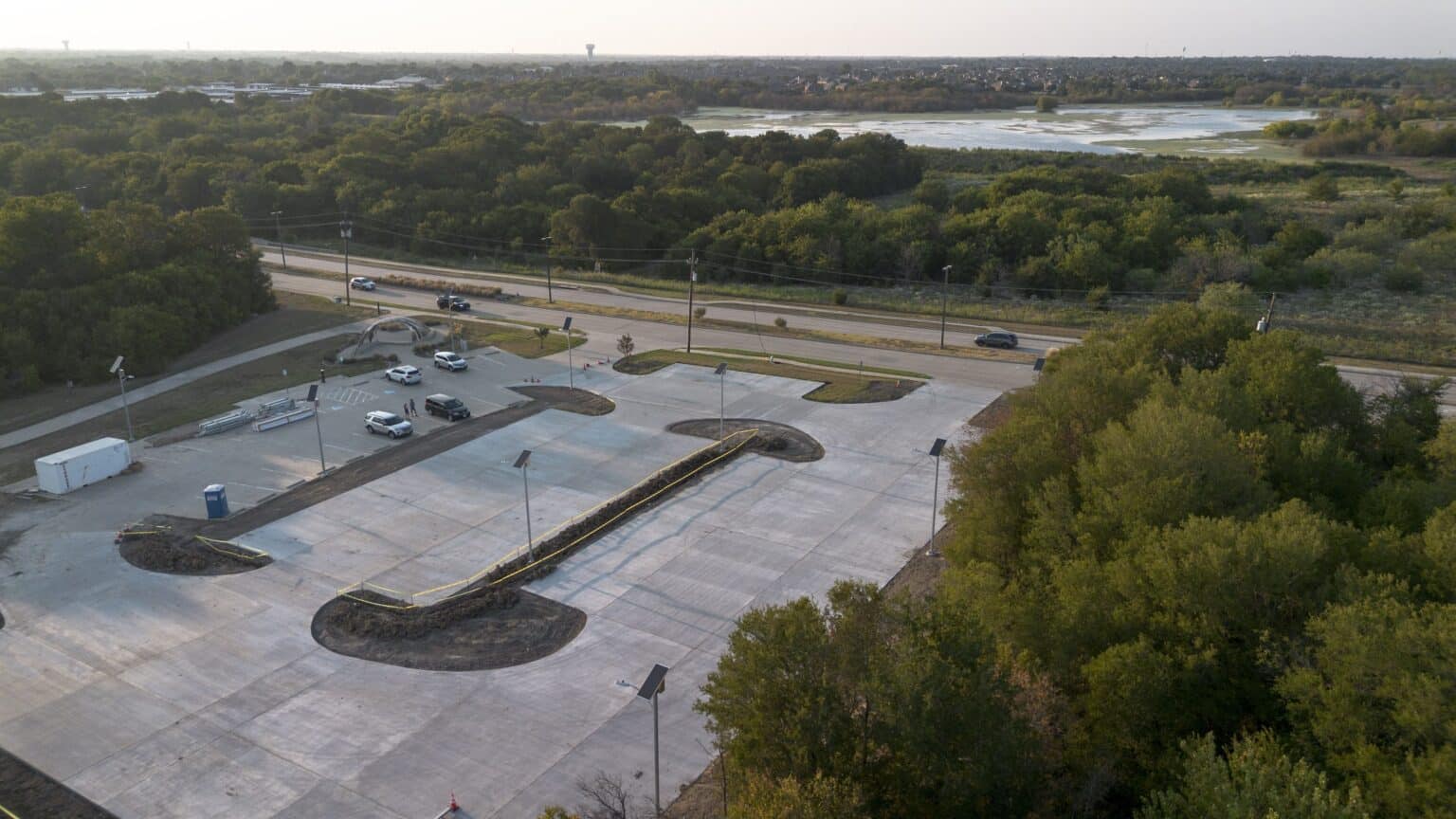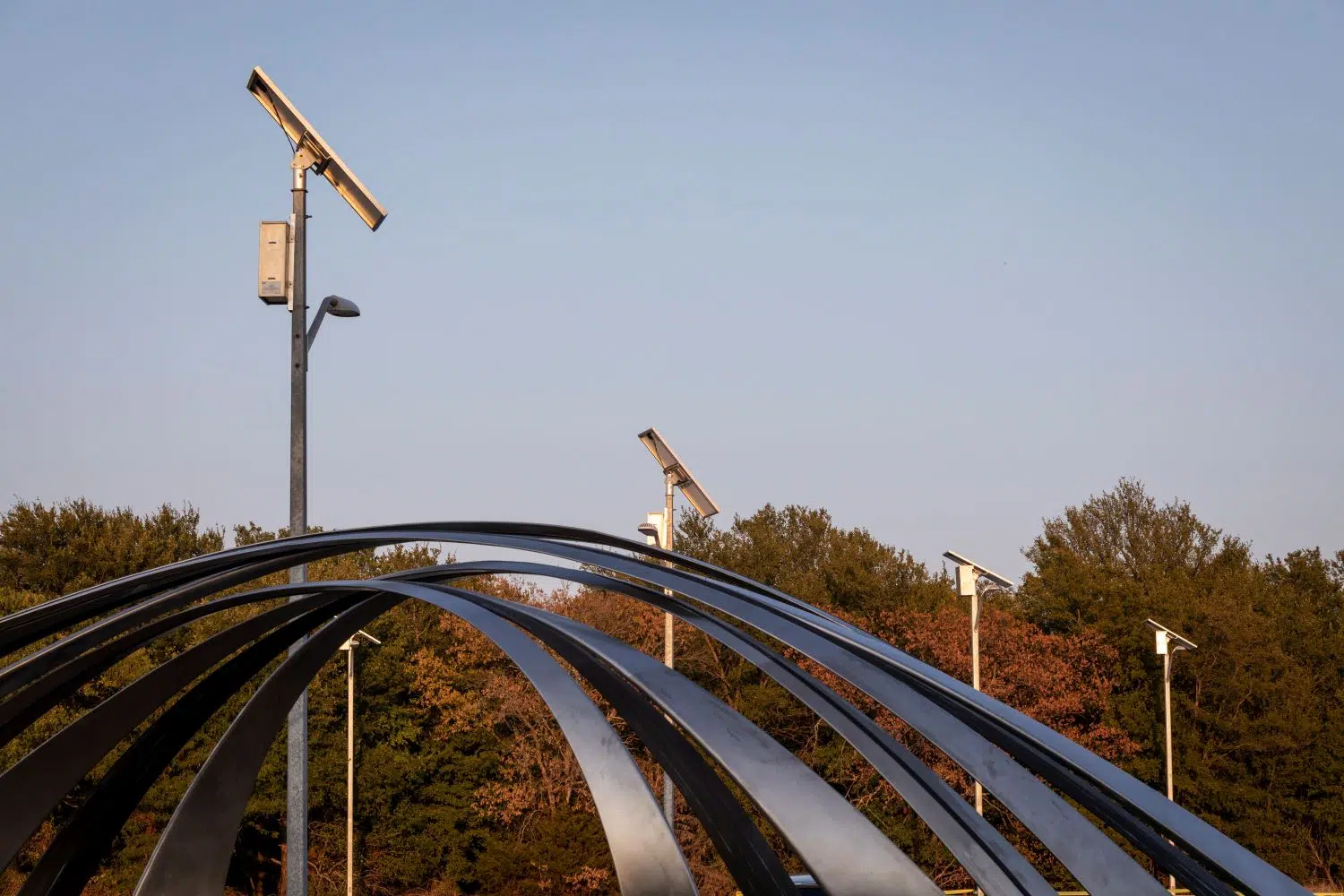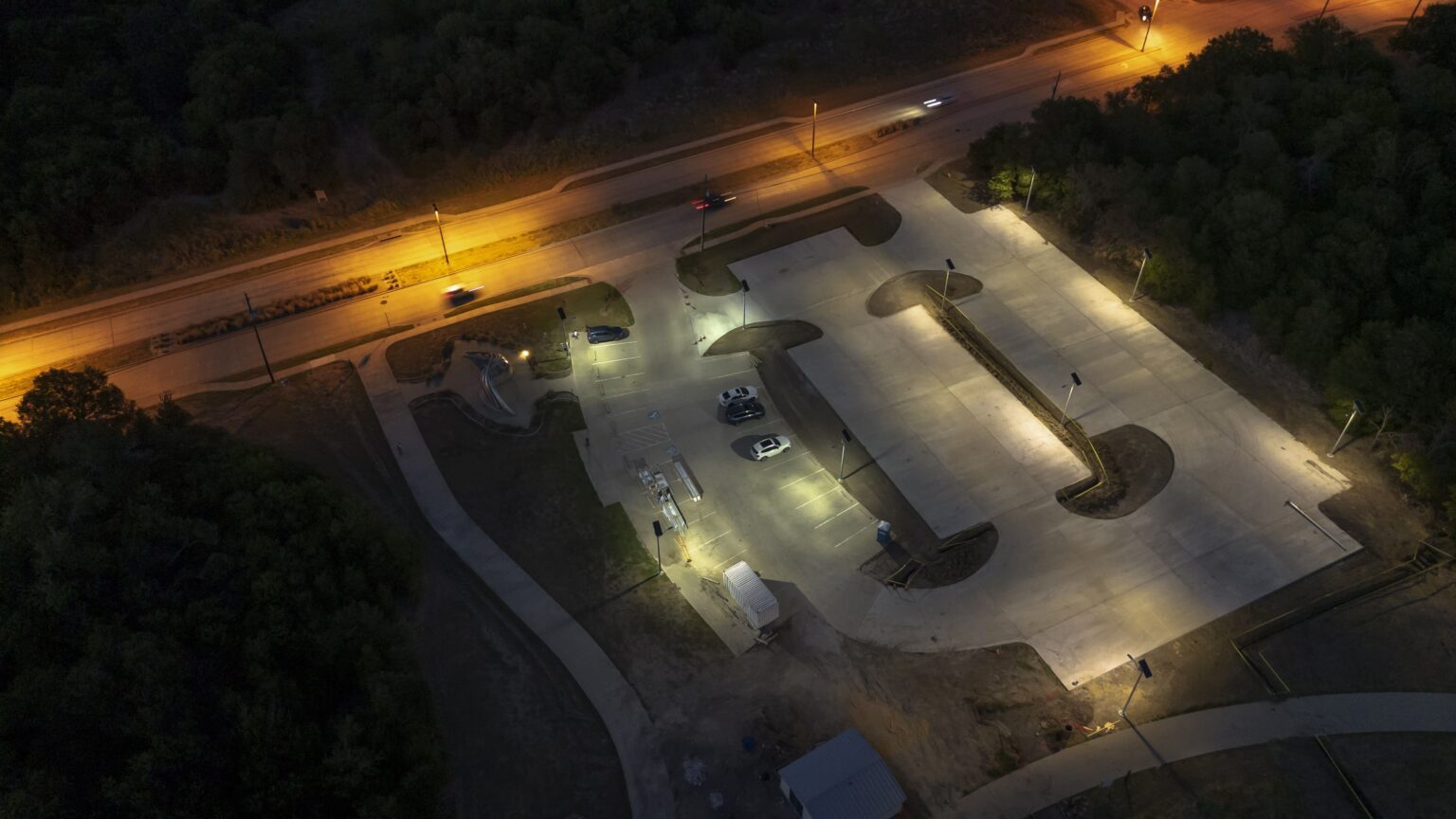Case study October 2024
Wylie, TX
Environmental sensitivity led Wylie Parks and Recreation to try solar lighting. Five years of reliable performance brought them back.

Located between two water reservoirs 40 minutes from downtown Dallas, the City of Wylie is home to 61,000 people—and counting. Since 2010, the population has increased by nearly 30% and continues to grow at a significant rate.
With people flocking to Wylie, the City is under pressure to expand its facilities and amenities while upholding its commitment to preserve natural spaces for future generations. These priorities converged at a parking lot near the Municipal Complex, which serves as a popular park and trail access point, connecting residents to the rec center, library, and municipal offices.

When the parking lot was built in 2018, the Parks and Recreation Department chose solar lighting for its flexible and non-intrusive installation. The parking lot adjoins an endangered ecosystem volunteers are working to remediate, and installing conventional lighting (which involves trenching and wiring) would have been disruptive, time-consuming, and costly.
Instead, four of Sol’s legacy Top-of-Pole (TP) systems were purchased and installed at the corners of the lot. These provided the reliable dusk-to-dawn lighting needed to keep trail users safe, while also delivering cost-savings and sustainability benefits to the City.
Five years later, the decision was made to build a splash pad at the same site—something that was identified as a priority in the city’s 2019 Parks, Recreation & Open Space Master Plan. The City knew that adding an amenity would also require expanding the parking lot to accommodate more park-goers, and they again turned to Sol, hoping to place a second order.

After performing a comprehensive site assessment, Sol developed a lighting layout and product that both met the city’s requirements and matched their original systems (almost) perfectly. The seven new EverGen-M systems have the same finish, color temperature, and distribution as the TP systems, and they come with the added benefit of remote monitoring, which allows city personnel to access asset location, status, and performance data from anywhere.
The lights were installed in August 2024, and already the City is receiving positive feedback from residents and visitors. And with more parks, playgrounds, and amenities being planned for the community in the coming years, they’re thinking about ways solar lighting can be used to keep safety up and environmental disturbance down.
